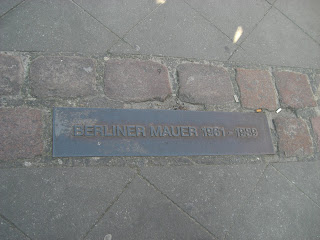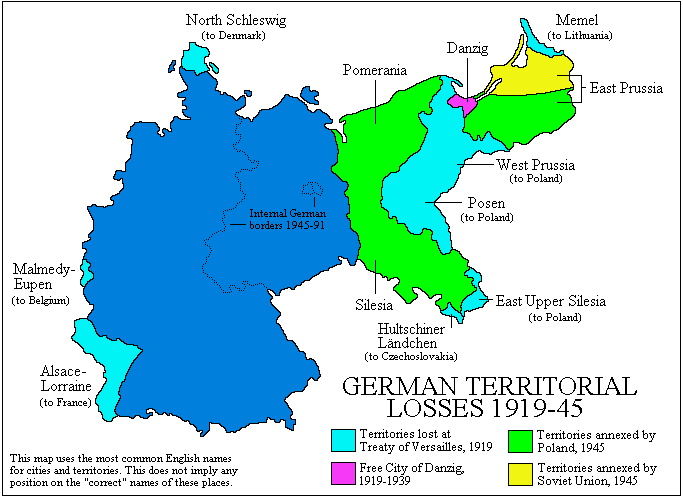Hello and welcome back! I hope everyone had a great spring break. Mine was excellent. After a very nice trip to Bavaria in the first week, I spent the second week relaxing and hanging out with friends here.
Just a quick recap of my trip, centered around a select few of the pictures I took.

I started off the 350 mile trip at the train station in Rheda-Wiedenbrück, my host town. This is a view across the tracks of a train station in small town Germany. I've become very fond of traveling by train since I got here, and I'm especially fascinated by the high-speed trains in Europe. The German high-speed train is called the ICE, which stands for "Inter City Express". Deutsche Bahn, the German rail service, has this really terrible habit of naming things with English words.
 Picture by Dennis Schollbach
Picture by Dennis Schollbach
On the route I took to Augsburg, the train reaches a top speed of 250 km/h (155 mi/h). If you're sitting in your seat looking forward, you barely notice anything. Once you look out the window, you realize how fast you're truly going.
The over 2000 year-old city of Augsburg, founded by the Roman emperor Augustus, has, like any other somewhat large German city, a beautiful, historical city center, good public transportation, like the streetcar below, and a huge church.

A streetcar in Augsburg

Downtown Augsburg
The next day, two other exchange students, their host families, and I went to visit a castle in Harburg. The castle is one of the oldest and best-preserved castles in the region, and we had a very interesting tour there.

A view of the
Innenhof (courtyard) of the castle

The castle dragon guarding the valuables.

After one of the heartiest meals of my life at a restaurant in Oettingen, we went on to walk off all of the
Spätzle,
Weizen, and
Schnitzel in the nearby town of Nördlingen. The town is one of the few towns in Germany with the historical wall still completely standing. This house is actually partially built into the wall.
The next day it was off to Munich, the 3rd biggest city in Germany and an incredibly popular tourist destination, best known for
Oktoberfest, basically one of the biggest parties in the world.

The new city hall in Munich. I walked around a corner and this view just stunned me. So, I took a picture.

The German Museum, which is kind of like the Air and Space Museum, but it focuses on all kinds of science and technology. It does really come across in the picture, but this building is massive.

This is a sign I saw near the University of Munich (which is beautiful, by the way). It's basically advocating the abolishment of the Euro. As I wrote in a
previous post, the introduction of the Euro was very controversial and led to a huge increase in the cost of living in Germany.
The text of the poster, loosely translated:
"Yes to a united Europe, but with national currencies!"
"The German mark stood by our sides."
(illegible)
"We demand a
referendum for the re-introduction of the German mark!"
"Vote for List 18 at the European elections!"

Ben (one of my good friends here and another exchange student I was traveling with) at the monument dedicate to "
die Weiße Rose" a resistance group in Munich during the days of Nazi rule. The leading members of the group were arrested and executed for their anti-Nazi political actions.

A demonstration in Munich against the oppression of Tibetans and the violence in Tibet right now.

A really strange basketball court. The surface is exactly like a normal basketball court, but the court itself is hilly. This was in front of a school in Munich. I wonder if kids actually play there and what kind of basketball results from a court like that.

Every trip to Munich has to stop by BMW Welt and the BMW Museum. OK, the museum doesn't open for another 2 months, so we just gaped in awe at the gorgeous cars in BMW world.

This pretty much sums up the biggest complaint I have about my year here in Germany: the weather isn't so fantastic. That's Ben making his way through wind and snow at the end of March.
All in all, I had a great trip to Bavaria. I got to hang out and travel some with my good friend Ben, meet his wonderful host family, and learn about a new region of Germany. Bavaria is a very charming place with strong traditions, beautiful landscape, friendly people, and great beer. The many different dialects and cultures add to the intrigue of Bavaria. I learned that it's a much more complicated picture than just Bavaria, that Bavaria actually consists of Swabians, Franconians, and Bavarians, all of whom speak different dialects and have some of their own traditions. Furthermore, larger cities like Munich have transcended regional cultures and developed personalities of their own. I would definitely recommend a visit to Bavaria to anyone traveling to Europe.
















































